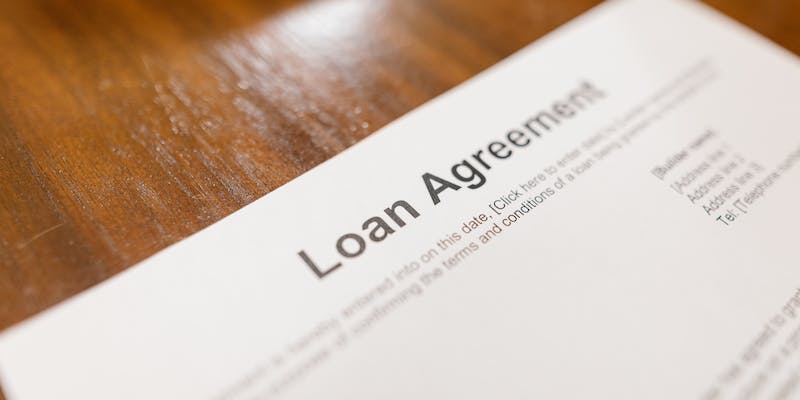Insurance serves as a reassuring safety net during life's unexpected challenges, such as a car accident. Yet, what if that safety net suddenly becomes frayed, and your insurance premiums surge following such an incident?
This concern is widespread, but the reassuring truth is that you can take steps to prevent your insurance costs from skyrocketing, all without getting lost in the bewildering world of corporate insurance jargon. In the forthcoming sections, we will provide you with a comprehensive guide comprising practical tips.
These tips will equip you with the knowledge and strategies necessary to navigate the post-accident insurance terrain effectively, ensuring that your financial burden remains manageable while safeguarding your coverage.
How to Keep Your Insurance Premiums Down After an Accident
Dealing with increased insurance premiums after an accident can be stressful, but it's not an insurmountable problem. Let's dive into practical tips to help you navigate the post-accident insurance landscape while keeping your costs in check.
Understand Your Coverage
The first step in managing your insurance premiums after an accident is to fully understand your coverage. Many people blindly sign up for policies without knowing what they include. Different types of coverage (liability, comprehensive, collision, etc.) have varying impacts on your premiums. Take some time to sit down with your insurance provider and go over your policy.
Ask questions like, "What does my policy cover?" and "What are the limits?" Understanding your coverage will help you make informed decisions and ensure you're not overpaying for unnecessary features.
Assess the Damage
After an accident, it's crucial not to hastily file a claim without thoroughly evaluating the extent of the damage incurred. Surprisingly, even seemingly minor dents and scratches can often be rectified at a lower expense compared to your deductible. In such cases, opting to cover the repair costs personally can be a prudent move.

By doing so, you sidestep the risk of raising your premium due to a claim. To make the most financially sound decision, invest the necessary time in seeking multiple repair estimates from well-regarded auto repair shops. This thoughtful approach ensures you choose the most cost-effective solution for your situation.
Shop Around for Quotes
Insurance providers employ various methods to determine premiums, each vying for your patronage. It's prudent not to hastily accept the initial quote. Instead, cast a wider net and solicit quotes from multiple insurers. You may be pleasantly taken aback to discover a superior offer that provides comparable coverage.
Thanks to the convenience of websites and apps, comparing quotes has never been simpler; seize this opportunity to identify the optimal solution tailored to your requirements. Bear in mind that dedicating a tad more time to thorough research can pave the way for enduring financial benefits.
Increase Your Deductible
Your deductible is essentially the initial amount you must personally cover before your insurance steps in to shoulder the remaining expenses. Opting for a higher deductible can be a smart move to reduce your monthly premiums. Yet, exercise caution with this choice, as it entails committing to a larger payment in case you ever need to file a claim.
To safeguard yourself, ensure you maintain sufficient savings specifically designated to cover the increased deductible in the event of an accident. It's akin to a carefully considered trade-off between immediate savings and the possibility of higher long-term costs down the road.
Defensive Driving Course

Enrolling in a defensive driving course is a smart move that benefits you in multiple ways. Not only does it enhance your skills and make you a safer driver, but it can also lead to substantial savings on your insurance premiums. Numerous insurance providers actively encourage this by offering discounts to drivers who complete these courses.
It's a genuine win-win scenario – you become a more responsible driver while simultaneously trimming your insurance costs. To get started, simply reach out to your insurance provider to obtain a list of approved courses and discover the associated discounts. The investment in your driving proficiency can yield dividends on many fronts.
Bundle Your Policies
If you find yourself holding various insurance policies, such as those for your automobile and home, it's worth contemplating the advantageous strategy of bundling them with a single provider. Insurance companies frequently extend discounts to policyholders who opt for multiple coverages through their services.
This approach not only paves the way for substantial savings on both your auto and home insurance premiums but also streamlines your insurance affairs. With a sole point of contact for all your policies, you'll experience greater ease in managing your insurance matters, ensuring timely payments, and maintaining an organized insurance portfolio.
Maintain a Clean Driving Record
Your driving history wields substantial influence over your insurance premiums. Upholding a pristine driving record by steering clear of accidents and traffic infractions can pave the way to reduced premiums. Prioritize adherence to speed limits, strict observance of traffic regulations, and the cultivation of safe driving practices to preserve this invaluable asset.
It's worth noting that a spotless driving record not only serves as a guardian of your premium costs but also acts as a guardian of your well-being on the road, ensuring safer journeys ahead.
Conclusion
Dealing with increased insurance premiums after an accident can be stressful, but it's not an insurmountable problem. By understanding your coverage, assessing damage thoughtfully, shopping around for quotes, adjusting your deductible wisely, taking a defensive driving course, bundling policies strategically, and maintaining a clean driving record consistently, you can keep your insurance costs under control.
Remember, it's essential to communicate openly with your insurance provider, ask questions, and explore your options. With these practical tips, you can navigate the post-accident insurance landscape with confidence and financial peace of mind. Your safety net doesn't have to break the bank; it can be a reliable and affordable shield against life's unexpected twists and turns.
Top of Form




